

Turning coat is actually as much an American Mafia tradition as keeping silent is said to be. Thanks to various influences - the Witness Protection Program, the increasingly affluent lifestyles of many underworld figures, the harsh prison penalties for drug offenses and other crimes, and the even more harsh measures used by the Mafia to discipline members - "flipping" has become commonplace. It would be impossible to list in this space all the mobsters who have provided evidence to investigators. Here are some of the more noteworthy figures.

Michael DiLeonardo has shared with prosecutors a great deal of information about the workings of New York's Gambino Crime Family and that organization's interactions with others. His information and testimony helped send scores of criminals to prison. However, his appearances in spectacular legal cases targeting alleged Gambino family leader John A. "Junior" Gotti (son of the late family boss John J. Gotti) have ended in mistrials.
DiLeonardo, whose paternal grandfather was immigrant Black Hand extortionist Vincent "Jimmy" DiLeonardo, recalls the Mafia as a sort of family business. Jimmy DiLeonardo was linked with the crime family of early Mafia boss Salvatore D'Aquila and remained with the organization as it became the Gambino Family. Michael DiLeonardo remembers as a child seeing boss Carlo Gambino around his grandfather's home.
DiLeonardo was twenty-six, when his brother Robert - a member of the Colombo Crime Family - was shot to death on orders from Colombo superiors. Michael's connections in the Gambino organization instructed him not to do or say anything about his brother's murder.
DiLeonardo, age thirty-three, was inducted into the Gambino Crime Family in December of 1988. He began cooperating with authorities after an arrest fourteen years later.
Admitting to involvement in three murders and to extorting "everybody I could," he helped prosecutors understand the nature of Gambino construction, trucking and stock market rackets, and he shed light on a number of underworld murders and the 1992 attempted murder of Guardian Angels founder Curtis Sliwa. He was also helpful in detailing the Gambino Family's problems with the business practices of Salvatore Gravano, when Gravano served as underboss to John J. Gotti. During his court appearances, DiLeonardo explained membership lists of the New York area families, which had fallen into the hands of investigators.
DiLeonardo spent three years in federal custody before being sentenced on Sept. 9, 2011, to time already served and three additional years of supervised release.
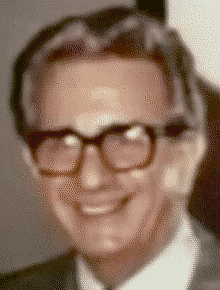
Intimately familiar with the crime families in the American West and Midwest and knowledgeable about organizations across the country, Fratianno became a valuable high-level Mafia snitch to the FBI in the late 1970s.
Fratianno spent the early years of his life in the Mayfield Road area of Cleveland, Ohio, where he became involved with the local underworld and acquired his "Weasel" nickname. After serving a prison sentence in Ohio, Fratianno decided to relocate to the West Coast.
There he became a member of the Mafia organization of Dragna, Licata and Brooklier. He moved up through the ranks and reportedly served for a time as acting boss under Brooklier. When his old Mafia buddies suspected him of treachery and made threats against his life, Fratianno sought government protection.
He entered the witness protection program and was a longtime resident of "the Valachi suite" at La Tuna, Texas. As a ten-year paid informant, Fratianno provided information that led to numerous arrests and testified in a number of successful prosecutions. He admitted to carrying out five murders and participating in six other killings.
He died of natural causes in 1993 while living under an assumed identity. His life story is preserved in the book, The Last Mafioso.

Brooklyn-born Salvatore "Sammy the Bull" Gravano is widely regarded as the turncoat Mafia underboss who sent John J. Gotti to prison. In fact, Gotti was probably undone more by his own words, picked up through FBI surveillance, than by Gravano's testimony.
(To a degree, Gotti was responsible for turning his underling. Surveillance tapes, in which Gotti talked agrily about Gravano, were used by the federal agents to convince Gravano to cooperate.)
Born March 12, 1945, and raised in Bensonhurst, Brooklyn, Gravano was part of a street gang by the early 1960s. A decade later, he was initiated into boss Paul Castellano's Gambino Family. He was raised in rank to capodecina when Gotti disposed of Castellano in December 1985.
From that point, Gravano became Gotti's trusted ally and enforcer. By 1990, he reached the position of underboss. His term was ended a year later, when FBI agents arrested him and the rest of the Gambino Family leadership.
Prosecutors had the goods on Gravano and could have sent him away for life. But Gravano cut a deal and testified against his old friend and boss in exchange for an shorter sentence. During his testimony, Gravano admitted to participating in at least 19 murders. A jury convicted John J. Gotti of murder and racketeering in spring of 1992. He was sentenced to life.
Gravano's short prison sentence was up in 1995. After a brief time in the witness protection program, he settled in Arizona. Despite the generous second-chance he had been given, Gravano couldn't keep his nose clean, and he was convicted late in 2002 of operating a drug trafficking ring. He was sentenced to 19 years.
Prosecutors have been looking for a way to extend that sentence. Bergen County, New Jersey, officials attempted to use one underworld turncoat against another, as mob assassin Richard Kuklinski's evidence helped indict Gravano for the murder of a New York detective in 2003. But Kuklinski died before the case came to trial, and the Bergen County prosecutor decided to drop the matter.
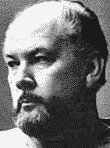
While serving several life sentences on murder charges, freelance assassin Richard Kuklinski became talkative. He talked to authors, he talked to television producers and reporters, and he talked to the office of the Bergen County, New Jersey, Prosecutor.
His conversations led Prosecutor John L. Molinelli to pursue murder charges against Salvatore Gravano in 2003. A murder indictment accused Gravano, already in prison on drug charges, of hiring Kuklinski to gun down New York Police Detective Peter Calabro on March 14, 1980. But Molinelli's attempt to use one informant against another was frustrated by Kuklinski's death on March 5, 2006, before the Gravano case could be tried.
In interviews, Kuklinski admitted to killing about 100 people. He said many of those murders were done under contract with New York and New Jersey region Mafia families. He claimed to have often used a cyanide spray, but he seemed equally comfortable with firearms. Kuklinski acquired his "Iceman" nickname when authorities learned that he sometimes stored the bodies of his victims in an industrial freezer housed in a leased warehouse. He did that to delay decomposition and cause medical examiners to state incorrect times of death.
Kuklinski was seventy years old when he died in a secure wing of St. Francis Medical Center in Trenton, New Jersey, where he was being treated for heart, kidney and lung problems. While not immediately providing a cause of death, authorities stated that his death was not suspicious.
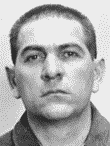
Joseph Morelli was the leader of an Italian gang in the Providence, Rhode Island, area beginning in the 1910s. Late in life, he wrote about crimes committed by some of his underworld associates.
(Joseph Morelli's brother, Frank "Butsey" Morelli, became the Mafia-recognized boss of Rhode Island.)
In 1921, when Nicola Sacco and Bartolomeo Vanzetti went on trial for killing a paymaster and guard during a robbery at South Braintree, Massachusetts, some suspicion arose that Joseph Morelli and his Rhode Island gang were actually responsible.
As attorneys for Sacco and Vanzetti tried in vain to win a new trial, they acquired a confession from a former Morelli gangster who said he was with the gang - but not an active participant - when it committed the South Braintree murders. The gangster said Sacco and Vanzetti were uninvolved.
In prison following conviction on another matter, Joseph Morelli submitted an affidavit denying any responsibility for the killings.
Sacco and Vanzetti were executed in August 1927. While many believed the two men were not guilty and had been convicted and punished for their anarchist political philosophy, the matter of Morelli involvement might have been forgotten. However, defense attorney Herbert Ehrmann wrote about the case in The Untried Case (published in 1933) and again in The Case That Will Not Die (1969). The books placed blame for the South Braintree killings squarely on the Morellis.
In response to the first book, Joseph Morelli, still in prison, wrote a ninety-six-page document disputing Ehrmann's account and attempting to resolve lingering questions about Sacco and Vanzetti and the killings. In the document, Morelli dispensed with the notion of an underworld code. He made specific reference to crimes committed by some of his underworld associates and accused some of complicity in the South Braintree killings.
Many found Morelli's statements unconvincing. Allegations of involvement in the killings followed him through his death from cancer in 1950 and continue to this day.
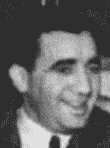
Many believe Abe Reles serves as a lesson to those who might consider betraying their underworld colleagues. After cooperating in important prosecutions, Reles was found dead beneath the window of his hotel room, where supposedly he had been protected by law enforcement.
In the 1930s, Abe Reles was one of the Brownsville, Brooklyn, assassins regularly used by New York-area crime families. The killers became known to press and public as Murder Incorporated. Reles answered to rackets boss Louis "Lepke" Buchalter. When the State of New York brought first-degree murder charges against Reles in 1940, the hit-man decided to answer to Uncle Sam instead.
Reles became an informant for prosecutor Burton Turkus and provided information on Murder Inc.'s methods, hierarchy and relationship to the American Mafia. Authorities were given details from as many as seventy unsolved murders. Thanks largely to Reles's information, Buchalter was charged with a capital offense. (He was eventually executed in the electric chair on March 5, 1944.) Reles helped to convict a number of his former underworld associates and send them to the electric chair.
Albert Anastasia, the link between the Murder Inc. killers and the Mafia, came under intense scrutiny, just as Buchalter was put on trial. Anastasia was saved from any Murder, Inc., prosecution by Reles's untimely death in Coney Island.
The informant happened to sail out his Half Moon Hotel window on the morning of Nov. 12, 1941, while being guarded by police. Officials decided that Reles had been trying to escape from custody out his sixth-floor window, using a couple of knotted-together bedsheets as a rope.
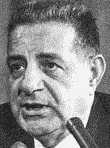
While few Mafiosi were jailed as a direct result of Joe Valachi's underworld revelations in the early 1960s, his televised appearances before Senate rackets investigators opened the public's eyes to organized crime.
Despite what has been written elsewhere, Valachi was certainly not the first Mafioso to cooperate. The legendary omertà silence has been broken on numerous occasions, and American Mafiosi have been testifying against each other since at least as far back as 1890.
East Harlem-born Valachi had been a veteran of the Castellamarese War that ultimately empowered Salvatore Lucania (Charlie "Lucky" Luciano), and he recalled numerous names and dates and places from that era. Valachi had been an associate of the Reina/Gagliano Family (he married Tom Reina's daughter Mildred on July 28, 1932), a friend of Buffalo Mafia leadership, a soldier in Salvatore Maranzano's personal guard and a soldier in the Luciano/Genovese Family.
Narcotics convictions beginning in the late 1950s left him in 1962 looking at a long sentence in Atlanta Federal Prison. Crime boss Vito Genovese, also a prisoner at Atlanta, turned on him that year, believing that Valachi was providing evidence to prosecutors.
Valachi understood his life was in danger. On June 22, 1962, he mistook an approaching fellow prisoner for a hired Genovese assassin and killed that prisoner with an iron pipe. Facing a serious - possibly life-ending - punishment for the homicide and the continued threat of assassination by his old comrades, Valachi turned initially to federal narcotics agents for help.
He eventually talked to the FBI. The Kennedy Justice Department saw the opportunity to use Valachi to lay out before all of America its case against the Mafia. The Justice Department may have equipped Valachi with some information that was beyond his personal knowledge in order to make his Senate speeches more informative and credible.
Through the statements of Valachi, authorities acquired a new name for the American Mafia, "cosa nostra" (our thing). In the hands of the FBI, the name (first referred to incorrectly as "causa nostra") became La Cosa Nostra.
Valachi lived in custody for a decade after turning on the underworld. Early on, he penned a lengthy document, entitled The Real Thing, which was used as source material for the book and movie named The Valachi Papers. After being held for some time at Washington, D.C., and Milan, Michigan, he was transferred to a federal prison at La Tuna, Texas. His rooms at that facility became known as "the Valachi suite." He died of natural causes at La Tuna in 1971. He was buried in western New York.
Charles "Millionaire Charlie" Matranga: During the summer of 1890, the boss of the New Orleans Mafia, testified in open court against the leadership of the rival Provenzano underworld organization responsible for seriously wounding his brother.
Raffaele Danniello and Tony Notaro: These two New York Camorra members and "hit-men" testified against their own group leaders in a 1918 murder trial. The trial resulted in the conviction of Brooklyn Camorra leaders Pellegrino Morano and Alessandro Vollero for setting up the 1916 assassinations of Nicholas Terranova and Charles Ubriaco.
Charlie "Lucky" Luciano: Even Lucky (Salvatore Lucania) cooperated. In an effort to avoid prosecution for drug trafficking, young Lucania assisted in a narcotics investigation. Some believe he passed information to federal agents during a 1929 beating that left him permanently scarred. Additionally, there is suspicion - but not evidence - that decades later he helped set up Vito Genovese for a narcotics bust.
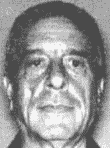
Greg "Killing Machine" Scarpa: The Colombo Family capo's career as an FBI mole allegedly spanned three decades. Documents indicate that Scarpa (photo at right) traveled south and terrorized some Ku Klux Klan members to aide mid-1960s Bureau cases. Known by some as "Grim Reaper," Scarpa regularly fed information to federal agents while leading one faction in a family civil war following Joe Colombo's death. Scarpa died of AIDS, reportedly contracted through a blood transfusion, in 1994.
Angelo "Big Ange" Lonardo: The Cleveland underboss reduced his prison term from life-plus-a-century to just under two years by providing information against members of the Cleveland, Pittsburgh, Kansas City and Milwaukee families and against the New York Commission. Read his 1988 Senate testimony.
Alphonse D'Arco: The one-time Lucchese Family bigshot joined the federal Witness Protection Program and began testifying against his former colleagues on Sept. 21, 1991. D'Arco, born July 28, 1932, in Brooklyn, became a made member within Paul Vario's crew in 1982. He became a Lucchese capo in 1988.
Frank Culotta and Nick Calabrese: Acquainted with the Chicago Outfit's operations in Vegas, these two informants provided information on the 1986 murders of Anthony and Michael Spilotro.
Anthony "Gaspipe" Casso: Prosecutors have benefited from the Lucchese Family underboss's insider knowledge since 1994. But, due to credibility issues, he has not taken a seat in a witness stand to date. Casso is believed to have been involved in three dozen murders. He admitted responsibility for the 1986 bombing death of Gambino underboss Frank DeCicco.
Ralph Natale: A former boss of the Philadelphia mob began cooperating with federal investigators in mid-1999, when he faced charges of operating a drug ring.
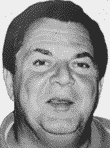
Joseph Massino: The Bonanno Crime Family boss began cooperating after a July 2004 conviction for multiple murders and racketeering. Massino (photo at right) faced an additional murder charge punishable by death. He agreed to wear a government listening device during two meetings with his reputed successor, Vincent Basciano.
While neither knowingly provided information to government investigators, both Joseph Bonanno and Raymond Patriarca Jr. unintentionally divulged details damaging to the American Mafia. In his autobiography A Man of Honor, Bonanno provided federal prosecutors with much of the information needed to later bring down the ruling Mafia Commission in federal court. Bonanno explained the functions and membership of the Commission. The book provided a prosecution map for then-U.S. Attorney Rudolph Giuliani. Raymond Patriarca Jr., while boss of the New England Crime Family, conducted a 1989 Mafia induction ceremony within range of a surveillance device. It was the first time law enforcement was able to listen in as Mafia members were "made."
Researcher Edmond Valin uses declassified government reports and other publicly available sources to deduce the identities of individuals who provided information about criminal organizations to the FBI. While these informants possessed knowledge about organized crime they were not necessarily members of an outlaw group.
Anthony Amatore (Chicago Outfit)
Dominick "Butch" Blasi (Chicago Outfit)
Dominick "Butch" Blasi (Chicago Outfit) II
Salvatore "Bill" Bonanno (Bonanno Family)
William "Willie the Tile Maker" Dara (Bonanno Family)
Theodore "Jack" DeRose (Chicago Outfit)
Charles "Chuckie English" Inglesia (Chicago Outfit)
Louis "Lew Farrell" Fratto (Chicago Outfit)
Anthony Lima (Pittsburgh, San Francisco)
Carmine Lombardozzi (Gambino Family)
Ralph Pierce (Chicago Outfit) II
Salvatore Piscopo (Los Angeles)
Harry Riccobene (Philadelphia)
Frank "Lefty" Rosenthal (Chicago Outfit)
Alfredo Santantonio (Gambino Family)